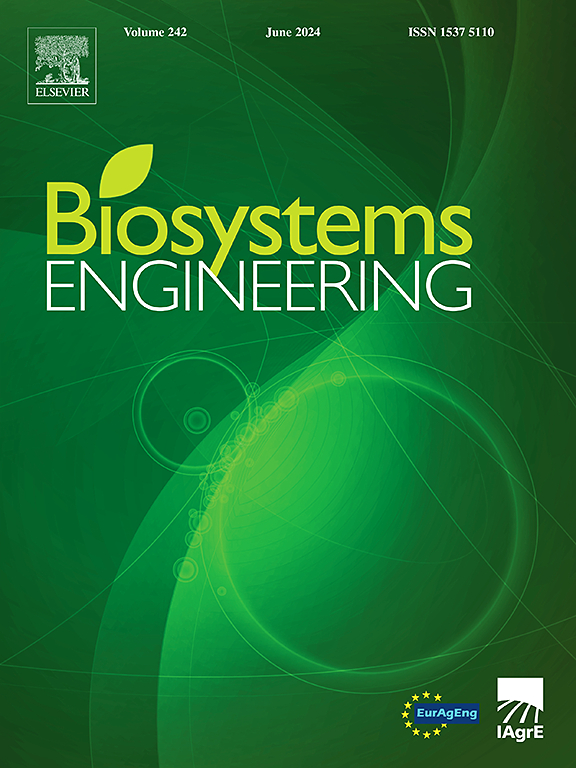Quantitative characterisation of microporous ceramic emitters microstructure and visualisation of seepage based on CT 3D reconstruction
IF 4.4
1区 农林科学
Q1 AGRICULTURAL ENGINEERING
引用次数: 0
Abstract
Pore characteristics play a leading role in the seepage performance of microporous ceramic emitter. To investigate the pore characteristics and seepage performance of microporous ceramic emitter, the pore parameters such as pore equivalent radius, pore throat size, and pore coordination numbers are quantitatively and statistically analysed by computer tomography (CT) three-dimensional reconstruction. Then, the seepage performance of single-phase water flow in pore space is simulated and analysed, and the three-dimensional visualisation of pore seepage in a microporous ceramic emitter is realised. The results show that the equivalent radius of pores in microporous ceramics predominantly ranges from 40 to 160 μm, with the pore throat size exhibiting a logarithmic normal distribution. With an increase in porosity, the pore coordination numbers rise, enhancing the connectivity among them. The tortuosity of the channel is reduced. The number of pores and the average pore equivalent radius also increase with the increase of porosity. The three-dimensional visualisation of pore seepage in microporous ceramic emitters shows that the permeability of microporous ceramic emitters has obvious anisotropy, and the pore structure has a strong control effect on seepage. With the increase of porosity, the seepage path of the microporous ceramic emitter gradually develops from branching to network. The research results can provide a theoretical reference for the preparation and application of microporous ceramic emitters.
求助全文
约1分钟内获得全文
求助全文
来源期刊

Biosystems Engineering
农林科学-农业工程
CiteScore
10.60
自引率
7.80%
发文量
239
审稿时长
53 days
期刊介绍:
Biosystems Engineering publishes research in engineering and the physical sciences that represent advances in understanding or modelling of the performance of biological systems for sustainable developments in land use and the environment, agriculture and amenity, bioproduction processes and the food chain. The subject matter of the journal reflects the wide range and interdisciplinary nature of research in engineering for biological systems.
 求助内容:
求助内容: 应助结果提醒方式:
应助结果提醒方式:


